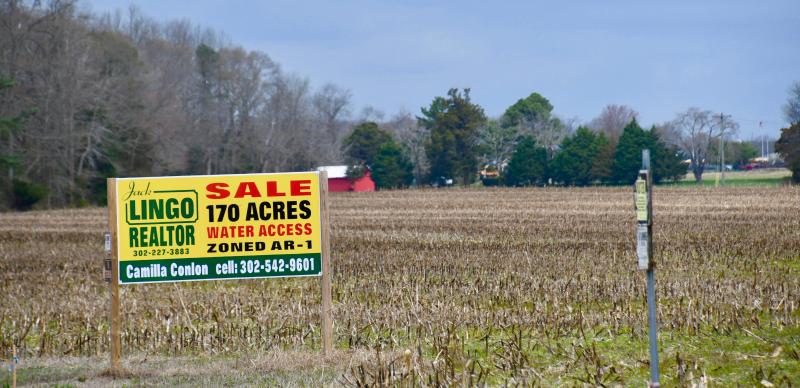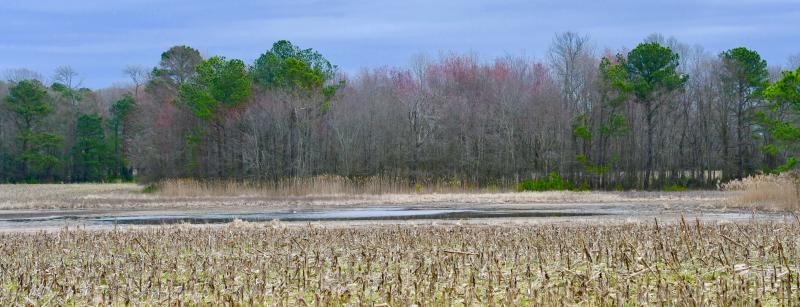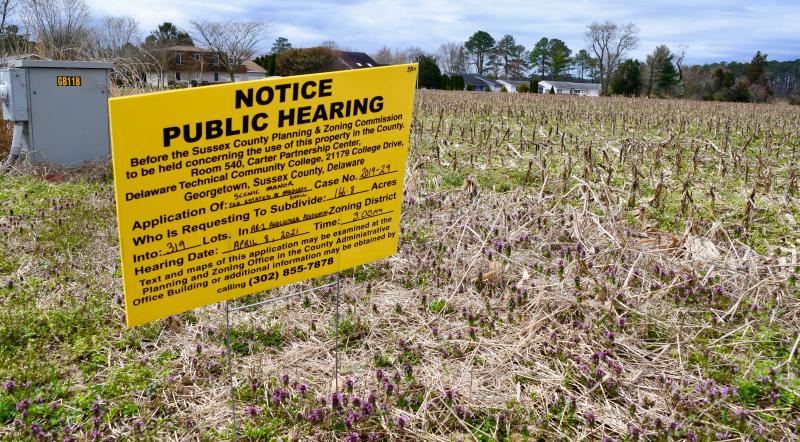Environmental issues surface on Scenic Manor subdivision
Residents who live in the vicinity of a proposed subdivision on Mulberry Knoll Road, south of Route 24 near Lewes, are mounting opposition and plan to testify against the application during a Thursday, April 8 Sussex County Planning and Zoning Commission public hearing.
The developer of Scenic Manor, formerly Estates at Mulberry Knoll, has filed an application for a subdivision with 319 single-family home lots on a 167-acre parcel between Arnell Creek and the Dorman Branch of Love Creek.
Lots are proposed on both sides of Mulberry Knoll Road, with the majority on the eastern side.
Judy-Rose Seibert of Saddle Ridge is urging residents to get more information, available on the Sussex 2030 website at sites.google.com/view/sussex2030-mulberry/home.
The hearing will take place during the commission's meeting in the Carter Partnership Center on the Delaware Technical Community College Georgetown campus. Meetings get underway at 3 p.m. with the hearing on the application scheduled for 6 p.m.
State agencies want site visits
During the Preliminary Land Use Service review process, Department of Natural Resources and Environmental Control and State Historic Preservation Office officials requested site visits or surveys of the property. On the project application, the developer has agreed to the requests.
According to the State Historic Preservation Office, there are three known archaeological sites in the western, northeastern and southern sections of the property, including a historic farm located in the middle of the property.
One of the sites near Arnell Creek dates back to when the Dutch settled the area in the 17th century. Because of the possibility of other sites, the office is requesting an archaeological survey of the property.
The plans include clearing 9 of the 27 acres of forest on the site. The site also contains 18 acres of tidal wetlands and 5 acres of non-tidal wetlands.
DNREC officials are also requesting a site visit to identify any rare and endangered species, and breeding marsh birds. In addition, environmental officials noted the eastern tiger salamander, an endangered species in Delaware, is located on the property.
Officials have asked the developer if they can conduct the survey during the breeding season for the salamander (January through February) and the breeding/territory-establishment season for marsh birds (April through June). The surveys would be conducted at no expense to the property owner.
DNREC officials requested that a 100-foot buffer be left intact around the perimeter of the forested wetlands.
DNREC officials also noted the potential old-growth forest on the property has been identified as core wildlife habitat by the Delaware Ecological Network, which means habitat that is defined as containing relatively intact natural ecosystems, and is of high quality for native plants and animals.
In the PLUS report, DNREC officials offered a long list of recommendations, including timetables when work should be done to protect nesting birds. “A qualified biologist should be on site to determine if and when marsh birds have begun establishing territories and/or nesting,” the report noted.
The developer's response to the state's PLUS report comments had not been posted on the state website as of March 31.
Concerns about habitat loss
Among concerns expressed by residents is the possible impact of the development on the American kestrel, an endangered falcon in Delaware, as well as other birds that frequent the property.
Both male and female American kestrels have been observed on the property for the last three years, Seibert said. In the Mid-Atlantic region, this bird’s population has declined 88 percent since the 1970s, according to data from the United States Geological Survey breeding bird survey, she said.
Seibert said she has seen several birds listed as species of greatest conservation need in the non-tidal wetlands on the property, including glossy ibis, snowy egret, greater yellowlegs and lesser yellowlegs. “These non-tidal wetlands would be destroyed if the subdivision is built, as there are plans to convert them to stormwater ponds,” Siebert said.
Hundreds of migratory birds were observed on this site in May 2020, including laughing gull and barn swallows, she said.
Only one public hearing
For subdivisions, there is one public hearing before the planning and zoning commission. Sussex County Council does not act on subdivision applications unless an appeal is filed.
See the application at:
stateplanning.delaware.gov/plus/projects/2019/2019-08-06.pdf
See the PLUS report at:
stateplanning.delaware.gov/plus/comments/2019-08-06-response.pdf















.png)









































